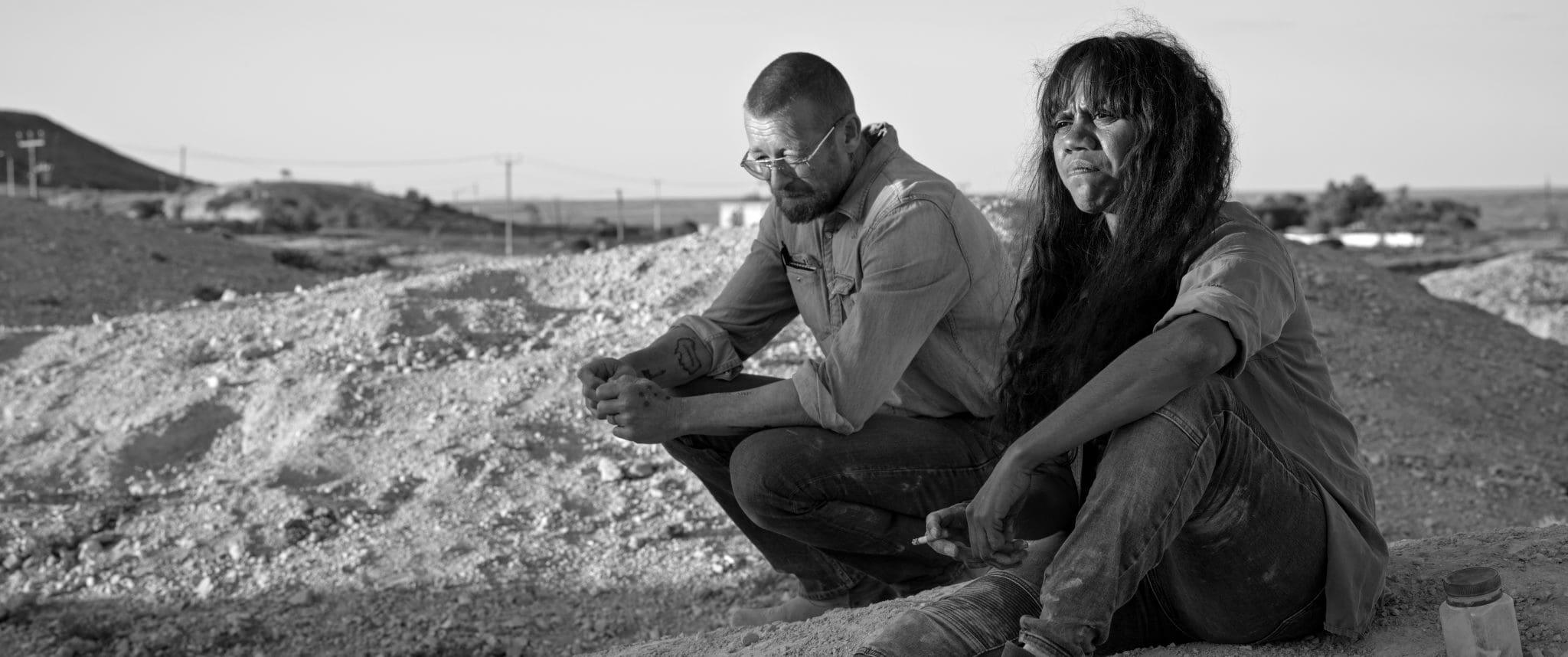The afterlife seems to be having a cultural moment. From 2 of the last 7 Booker prize winners to nascent TV classic The Good Place, its liminal spaces let artists explore moral complexities in the shadow of death, without resorting to crude moralisms about heaven and hell. Ivan Sen’s Limbo, albeit metaphorically, brings the theological construction to bear on an Australian town of the same name.
The protagonist Travis Hurley, played by a battered-looking Simon Baker, is a cop sent from the city to the remote desert town to review the cold case of a missing – presumed murdered – Indigenous girl from twenty years before. He becomes familiar with the girl’s estranged parents, and gradually accumulates morsels of information from their guarded personalities. Charlie, the father, played by Rob Collins, lives in a trailer near a series of mining holes, while the masterful Natasha Wanganeen as the mother, Emma, lives in a small house with Charlie’s other, rebellious son, and two adopted daughters. Gradually their testimony, as well as that of a close friend, Oscar (Joshua Warrior) leads Hurley to a notorious figure and his law-bending parties. But when he arrives at his home there is only his grave and a decrepit brother.
Thus, the identity of the perpetrator is largely cut out of the film’s tension, and those lusting for a Wallanderian earnestness among the grit will also be sorely disappointed. With his mangy beard, balding head, aviators and secret heroin addiction, comparing Hurley to Walter White seems almost inevitable. Baker’s performance is thorough; except for an annoyingly repetitive standing position and the occasional growl in his delivery, he gives a subdued but poignant effort. However, the true standouts are the supporting actors.
Collins as Charlie implacably demonstrates the pain and the thwarted hopes brought about by the scalpels of institutional racism; on paper he is the obvious choice to be interviewed first. But there is in Wanganeen’s performance as Emma a deeper level of desperation and regret; she and her children spend their days off scavenging for valuable minerals on hillsides. The spiritual notion of limbo is thus firmly placed in the socioeconomic reality of Indigenous disadvantage.
Yet by couching the film in this metaphor, Sen avoids the dangers of sentimentality, while giving a brooding, leadened significance to the plot. Indeed, one phenomenal shot shows Hurley and Charlie on opposing sides of the table in Charlie’s trailer and creates the kind of low burning but riveting tension that filmmakers all too often confine to suburban dramas.
It is this tension, marked by the relations between disadvantaged Indigenous characters and the quietly caring Hurley, that creates this liminal sensation, this incredible depiction of the loss, the listlessness, the thwarted hopes, the limbo of Indigenous people in Australia today.
This is enhanced substantially by the cinematography. Filmed in black and white, there is a slight white tint that leaves the viewer slightly off-kilter and abandons the moodier monochrome of films like Manhattan and Psycho. Moreover, the choice to film around Coober Pedy, famed for its empty moonscape, further emphasises the alienation of all the characters as living in that in-between; the desert as both ‘other’ to the white man, but also as a setting for the Indigenous suffering and dispossession. Long shots over the mine shafts are particularly effective at creating this haunting atmosphere.
The chief criticism that can be made of the film is that, without the exceptions already mentioned, camera movement and placement are generally standard. Although the atmosphere was certainly not damaged by this, it can leave the film feeling somewhat lethargic at times, especially in the initial half hour when Hurley’s addiction is stark.
There is a grandness in the ambition of Limbo. It is thematically packed, its central metaphor almost bulging at its seams; Christian radio preachers are thrown together with domestic drama, institutional racism and the othering of the Australian desert. Its own title saves it from rambling and ensures it is a deeply thoughtful and haunting film. But it is still impossible not to wonder if these liminal spaces might have been better served without couching them in their Christian manifestation.





